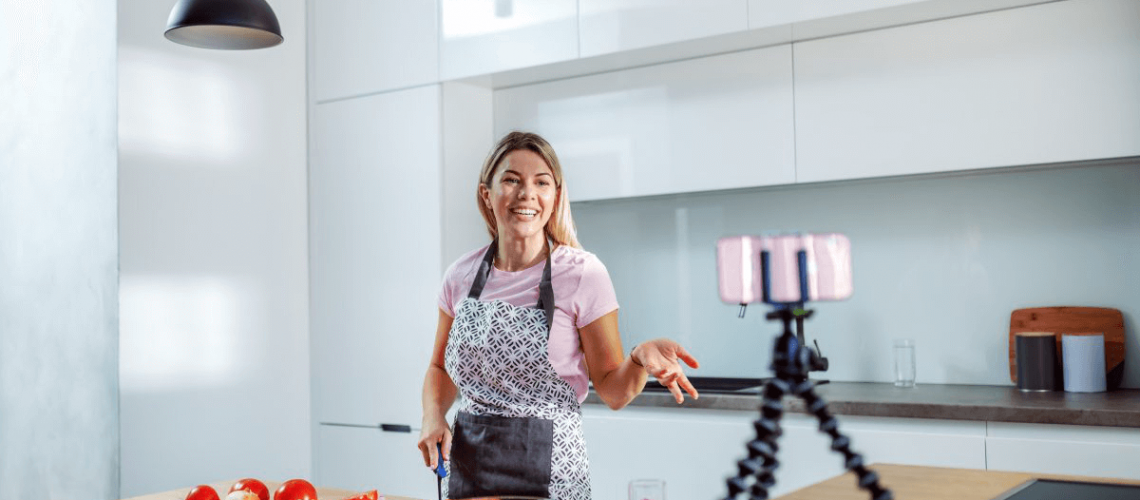What was once considered a 3-week lockdown is now entering its 4th month. While COVID only came to South Africa’s shores in March, it was assumed by many that it would not cause as much havoc as it was in countries like China and Italy. Businesses had to revisit their budgets and prepare for the worst – departments such as marketing took the hardest hits. Campaigns which involved influencers had to either be paused or cancelled altogether. Influencers were most affected, had to accept bids that were less than their average operating rates or work with brands that did not resemble their lifestyle. In short, influencer marketing took a big hit.
Leading social media marketing platform, Socialbakers, released a report on the state of Influencer Marketing during the pandemic over the last 3 months. The report showed an exciting change of brands using more micro-influencers (less than 100 000 followers) for their campaigns than the macro. Businesses are looking for more reach and engagement, which is more likely to be achieved by influencers with lesser followers, who are more authentic. Sponsored content has also decreased, and this may be due to the pandemic, although the trend started showing its face from November 2019. Let’s take a more in-depth look into the report.
#Influencer Insights
Many complained that #Sponsored and #Ad hashtags brought down the authenticity of any advert. The study has seen a decrease in the use of these hashtags. This includes #Ad, #Sponsored, #Paid and #promo. The number of brands collaborating with influencers saw a 37% drop as compared to 2019.
The average interactions on an influencer’s post mentioning the brand compared to a post published by the brand itself dropped by a staggering 41% as compared to April of 2019. This means that the number of interactions which took place on a paid promo by an influencer was less than the engagement which took place on the brand’s social media accounts – more people commented on the brand’s posts than on the influencers. However, healthcare posts saw an increase in efficiency – influencers on Instagram received 4.2 times more engagement on their posts than that of the brands.
The study also discovered that smaller brands have more success with influencer marketing than more prominent brands do – whether they pair up with a micro or macro influencer. More famous brands only had a successful campaign when they paired up with macro-influencers. Micro-influencers saw more brands bidding to use them during the pandemic.
Influencers with less than 10 000 followers saw more brands approaching them and yielded good results. This meant that macro-influencers saw a 1,3 decrease in the number of campaigns they were involved in. The study also discovered that a third of Instagram accounts which posted with the #Ad, had less than 10 000, the highest they have been since April 2019. Alongside this, Bakers saw that 93.9 accounts that they analysed in their research were micro-influencers.
Takeaway
From the summary of the report above, it can be concluded that brands are more willing to work with micro-influencers than the macro. The use of the #Ad and #sponsored hashtags is decreasing, and brands are starting to see more engagement on their own posts on social media than that of their influencers. While COVID has affected the marketing campaigns of many brands, the market for influencer marketing still exists, and the healthcare, insurance and streaming sectors are seeing an increase as compared to music festivals and events.
How to become an influencer
Many South African students and young adults have gone the influencer marketing route to make a quick buck and to grow their social media relevance. If you’re looking into this and have no idea where to start, consider the following questions:
- What lifestyle does my Instagram promote?
- Do I know why my audience follows me?
- Do my posts get engagement?
- Do I have the time to curate content?
- Download influencer marketing Apps such as Humanz and InDaHash
Due to the influence, micro-influencers have, you no longer need to have thousands of followers. Even if you have 2000 followers, you can qualify for a campaign. If you are receiving fewer bids, that is okay. This gives you more time to increase your engagement by creating content which relates to your audiences’ current situation.
Apps for influencer marketing
If you’re looking to get your name out there or start bidding for campaigns, you can download and sign up on the Humanz, Talkwalker, Brand Advisor and InDaHash App. There are many influencer marketing Apps available and agencies that specialise in this for brands. Your social media does not have to be all glammed up, even if your regular student, a parent, or day to day working adult, your niche has something unique to offer brands. Tagging brands in your non-paid posts to make them aware that you are the perfect match for them is also a right approach. Who knows, you might just end up as the face of the brand.

